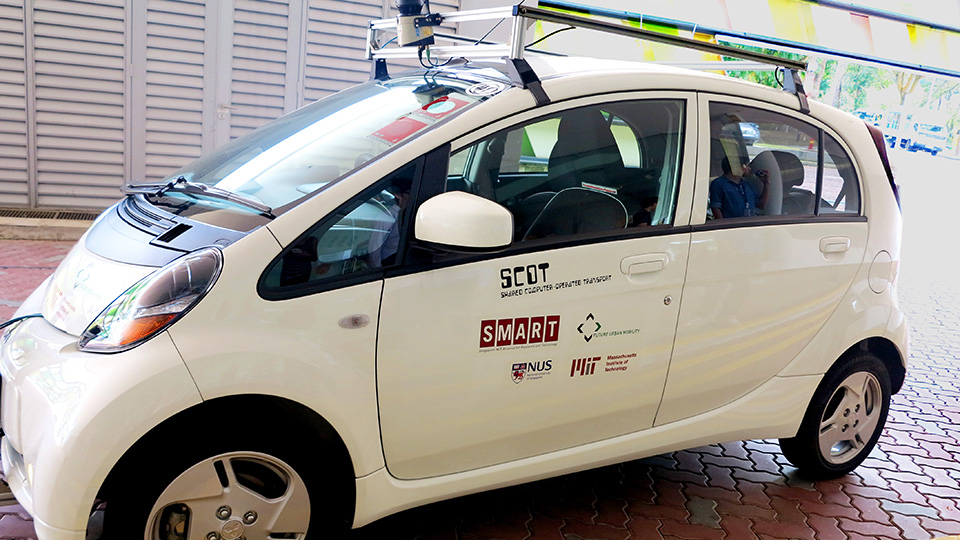As we move closer to 2015, many sci-fi enthusiasts are cheekily expecting scientists and engineers to mass-produce the hoverboard from Back to the Future Part II.
As cool as that may be, it seems that it is the automotive industry that is pressing to revolutionise the way the world moves about.
In recent months, Singapore has thrown their hat in the ring as well. In June 2013, during a World Cities Summit Mayors’ Forum in Bilbao, Singapore’s Minister for National Development Khaw Boon Wan envisaged that driverless cars are a likely reality in 15 to 20 years. This vision came closer to fruition at home when the National University of Singapore, working in tandem with MIT, rolled out the SMART-NUS autonomous vehicle, Shared Computer Operated Transport (SCOT). Fitted with a computer of pre-loaded maps and sensors that detect better than humans, this driverless vehicle that can transport people around smartly, safely and from the looks of it, comfortably as well.

Before that was unveiled however, Singapore university Nanyang Technological University (NTU) announced a tie up with local firms Jurong Town Corporation’s (JTC) CleanTech Park and Induct Technologies to develop their own driverless vehicle, labelled the NAVIA.
NAVIA will transport passengers between JTC’s CleanTech One building and the NTU Yunnan Garden campus. Supported by the Economic Development Board (EDB), this venture was not to merely have a stylish mode of transport. The main agenda would be directing research efforts towards improving current driver-free technology. The collaboration will pay particular attention to wireless charging and battery enhancements. It is hoped that aside from these refinements, new ideas in sustainable transportation solutions will come about as well.

There is an ideal notion going round that a driverless car can be utilised well.
Within a family, one car can go to and fro, servicing the needs of different family members throughout the day. This maximises efficiency of the car as a resource and potentially reduces traffic volume. Equipped with computer calculations that can better predict traffic patterns, it is hoped that such cars can ideally negate human error to prevent traffic jams and bottlenecks.
There is a keen interest for driverless technology to establish itself in Asia. It is seen as one of the solutions to the broad challenges of urban planning. With the urban sprawls of Delhi and Shanghai, the tight squeezes in land-locked Singapore and Hong Kong and the eventual growth of infrastructure in the emerging economies of Hanoi and Yangon, answers will need to be sought all across the region to alleviate the problems that lie in wait with increasing population needs.
Over in Europe, the Germans are at an advanced stage with these ideas.
Perhaps befitting their storied histories, Mercedes Benz, Audi and BMW have gone some way to create and test out their concept models in very significant ways. A modified and experimental Mercedes Benz S-Class drove itself 60 miles between two towns. Audi and BMW unveiled the latest iterations of their own technology at CES 2014. Tech giant Google has had such cars drive round their Mountain View HQ for a while now. Closer to home, the Japanese firms like Toyota, Nissan and Honda have been at it as well.

But most recently, Hitachi announced the Robot for Personal Intelligent Transport System (Ropits), a single passenger car able to drive on sidewalks.
Unlike the others above who have developed technology while primarily driven by competitive innovation, the Ropits does more to address a specific concern. Considering the ageing Japanese population, Hitachi’s model was developed as way for the older population to get around safely.
It is considerations like these that are perhaps more in line with the driverless technology being developed in Singapore. It is natural for commercial car firms to be looking at automation as they look to improve on safety and implement smarter features that make driving much easier. However, the focus of the Ropits and the models being developed in Singapore seem keen to solve problems that currently exist within the community. An ageing population is of major concern in Japan and Singapore. For the latter as well, easing complex transportation issues in a restricted space with a growing population is a primary goal.

Whatever the motivation, it is clear that automated driving is no longer a futuristic fantasy.
While we haven’t quite reached the sophistication of the cars from the Will Smith film, I, Robot, we are quite clearly making progress to such an end. If the element of safety can be perfected, the potential benefits would be immense. Imagine being auto-navigated to work with minimal risk of mishaps or encountering traffic bottlenecks. The frazzled commute associated with city living would truly be a thing of the past.
This also means that we are a step closer to flying cars.
Also read: Flying cars are now a reality – set to launch in 2015














